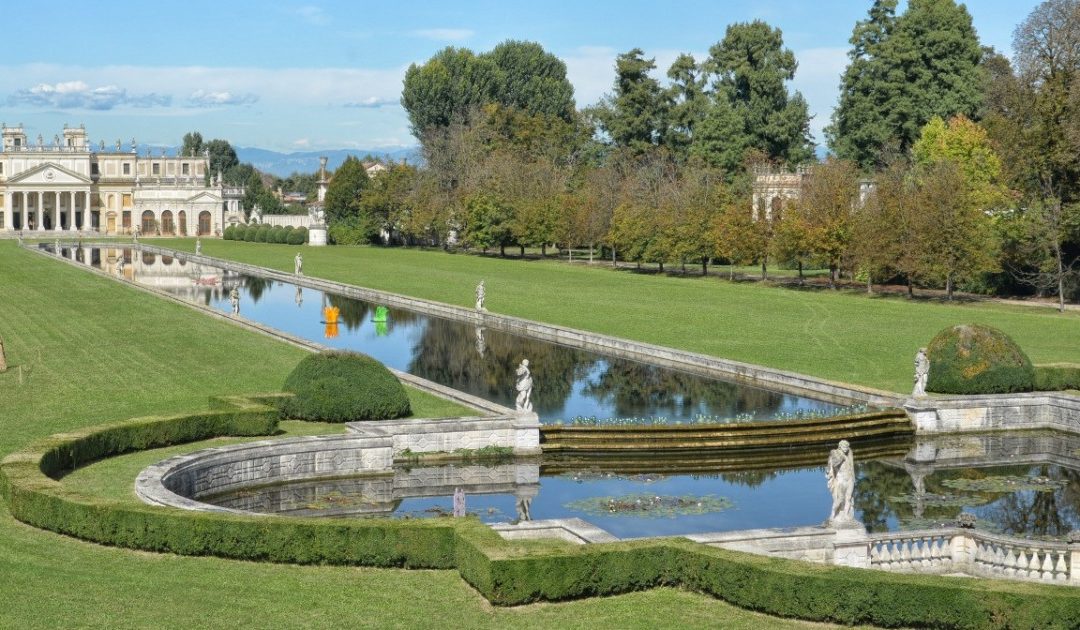Site of great historical interest, the Riviera del Brenta is remembered for a fundamental reason: the presence of fascinating Venetian villas, built by Venetian patrician families between the 15th and 16th centuries. In fact, the Brenta area has always been an elite area which hosted aristocratic families.
RIVIERA DEL BRENTA: THE HISTORY
In 1345 the Great Council of the Republic of Venice abolished the law that did not allow the citizens of the Serenissima to acquire property on the mainland. As a consequence, the Venetian families moved their affairs on the banks of the Brenta.
As they had the necessity to control the production more closely: villas were built, which gathered in one building the main dwelling and other buildings used for various purposes. There were three types of villas, each with a different feature:
- The temple-villa, meeting place for intellectuals and artists.
- The villa-company, intended for those who wanted to make the most of agriculture a new form of income.
- The villa-palace, where large parties and sumptuous banquets were held.
And it is in this last type of villas that aristocratic families loved to spend their holidays: they left Venice with boats called Burchielli, going up the Brenta canal using the oars, and then up to Fusina. From here, the boats were transported by horses to Padua, where they would proceed to travel the Riviera del Brenta.
Very well decorated inside, the Burchiello also seemed to reflect the luxury and elegance of the city of Venice. Burchiello fascinated many influential personalities, intellectuals and writers, who described it magnificently in their works: among them were Giacomo Casanova, Charles de Brosses, Montesquieu and Goldoni.
LA RIVIERA DEL BRENTA: THE VILLAS
The Riviera del Brenta counts a large number of beautiful and majestic historic villas, with luxurious and magnificent interiors. Let’s get to know some of them!
- Villa Pisani in Stra
It was built in 1721 by the architect Gerolamo Frigimelica and Francesco Maria Preti, for the aristocratic family Pisani from campo Santo Stefano. Inside you can find the historical fresco by Tiepolo, the glory of the Pisani family, while in the other rooms there are frescoes by Giuseppe Zais, Jacopo Guarana, Francesco Simonini, Andrea Urbani, Jacopo Amigoni and Giambattista Crosato.
There are 168 rooms, including the one in which Napoleon stayed as a guest.
Inside there is a garden of over 14 hectares, whose project was repeatedly revised in the 19th and 20th centuries. To the east there are architectural and scenic works, each with its own particular history.
- Villa Foscari
Also known as La Malcontenta, it was designed by Andrea Palladio in 1559 in Malcontenta, near Mira, for the brothers Alvise and Nicolò Foscari, who belonged to one of the most influential families in the Republic of Venice.
Inside the villa coexist elements deriving from the typical Venetian building, combined with ancient architecture. Giovanni Battista Zelotti and, to a lesser extent, Battista Franco, took care of the majestic interior decoration, in which mythological elements prevail.
Legend has it that the villa is known by the nickname Malcontenta because of one of the Foscari ladies, condemned to serve her sentence in solitude because of her unseemly conduct. It is said that the woman lived there during her last 30 years, and was never seen neither come out nor look out of her window.




